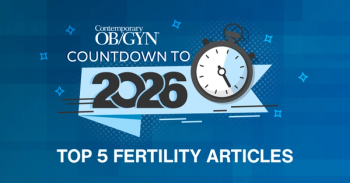
New guidance on an old problem: Management of intrapartum fetal heart rate tracings
The publication of the National Institute of Child and Health and Human Development recommendations for fetal heart rate interpretation in 1997 brought a major shift in the approach to intrapartum monitoring by standardizing the reading, analysis, and documentation of FHR and uterine contraction tracings.
Implementing the new guidelines
In contrast, developing precise management paradigms for patients falling into the 3 new NICHD categories was difficult, and on that subject the NICHD report was largely silent. Particularly challenging was developing a cogent management scheme for category II tracings, as well as how to deal with tachysystole during labor induction without having to resort to constant "on again, off again" cycles of oxytocin administration. A new practice bulletin from ACOG (with input from the American College of Nurse Midwives and AWHONN) helps fill this void.6
Managing category II tracings
Management of category I and III tracings was never much in doubt. A category I tracing, by definition, is reassuring and demands no specific interventions. Conversely, a category III tracing requires immediate intrauterine resuscitation (eg, maternal repositioning, administration of oxygen and additional intravenous fluids, stopping uterotonics, and consideration of short-term tocolysis), and, if there is not a timely resolution, expedited delivery. What is notable about the new ACOG recommendation for managing category III tracings, however, is that before intrauterine resuscitation, the first step should be to prepare for delivery. That is, one should anticipate the likelihood of needing an expeditious delivery and preemptively remove the common barriers to emergent delivery present on almost all units to facilitate swift action.
The problem with the NICHD categories lay mainly with category II tracings, which account for most intrapartum FHR tracings and have diverse etiologies and prognoses. Indeed, all category II tracings should not be treated equally because there is a broad spectrum of tracing types between category I and category III. The new ACOG practice bulletin for FHR management acknowledges this variability in acuity for category II tracings, although the general recommendation is that these tracings need continued surveillance and reevaluation.
Newsletter
Get the latest clinical updates, case studies, and expert commentary in obstetric and gynecologic care. Sign up now to stay informed.




